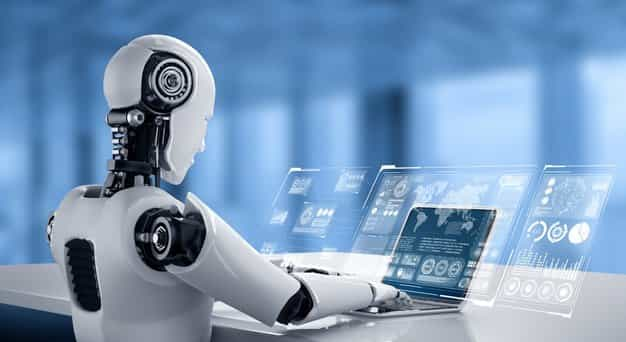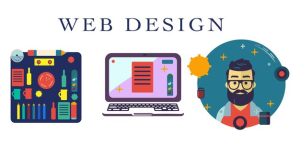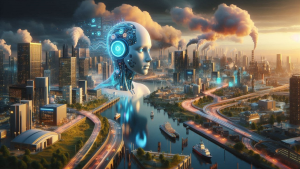Discover how Next-Generation AI Systems are transforming industries in 2025 through autonomous learning, cognitive computing, and intelligent decision-making that drives innovation and growth.

-
Introduction
-
The Evolution of Next-Generation AI Systems
-
Core Technologies Powering AI Transformation
-
Industry Applications Across Sectors
-
Ethics, Governance, and Security
-
Preparing Organizations for AI Integration
-
Future Outlook: Human–AI Co-Creation
-
Conclusion
Next-Generation AI Systems are redefining the boundaries of digital innovation in 2025. As artificial intelligence evolves, these advanced architectures and cognitive systems are enabling autonomous learning, intelligent decision-making, and human-like adaptability across industries.
Artificial Intelligence (AI) has rapidly transitioned from a niche research pursuit to a core driver of innovation across industries. The AI systems of today have already begun reshaping how organizations operate, innovate, and deliver value to customers. However, we are now on the threshold of a profound transformation—the era of next-generation AI systems. Unlike conventional AI, which relies heavily on pre-defined algorithms and supervised learning, next-generation systems leverage advanced architectures, autonomous learning capabilities, and cognitive computing to operate with unprecedented adaptability and intelligence.
These systems are not merely tools; they represent a paradigm shift in how machines understand, interpret, and interact with the world. They can process complex multi-modal data, reason contextually, make autonomous decisions, and even engage in creative problem-solving alongside humans. This evolution is reshaping industries, driving new business models, and redefining the boundaries of what is possible in technology.
The Evolution of AI: From Narrow to Next-Generation
Traditional AI systems have primarily been narrow or task-specific, excelling at particular tasks such as image recognition, predictive analytics, or language translation. While these systems have delivered immense value, they require extensive human oversight, labeled datasets, and manual fine-tuning to perform effectively. In contrast, next-generation AI systems are designed for generalization, adaptability, and self-optimization.
Key advancements driving this evolution include deep learning architectures that mimic neural pathways more closely, reinforcement learning models capable of self-directed improvement, and cognitive computing frameworks that integrate reasoning with experiential knowledge. These capabilities enable AI systems to not just process data but to understand context, anticipate outcomes, and make strategic decisions.
For businesses, this evolution means AI is no longer just a tool for operational efficiency—it is becoming a strategic partner in innovation, capable of co-creating solutions, predicting market shifts, and even generating new product ideas based on insights derived from diverse data sources.
Core Technologies Powering Next-Generation AI
The leap from conventional AI to next-generation systems is underpinned by several technological breakthroughs:
1. Autonomous Learning and Self-Optimizing Algorithms
Unlike earlier AI models that depend heavily on labeled datasets, autonomous learning systems continuously learn from real-time data streams. They adapt their algorithms based on feedback, environmental changes, and evolving patterns. Self-optimizing AI can detect inefficiencies in its processes, refine its decision-making logic, and even experiment with novel solutions without explicit human instructions. This opens new horizons for industries where rapid adaptation is critical, such as autonomous vehicles, financial trading, and supply chain optimization.
2. Cognitive Computing and Context-Aware Intelligence
Cognitive computing integrates AI with human-like reasoning, enabling machines to interpret, analyze, and apply knowledge in contextually nuanced ways. These systems can process unstructured data, including text, speech, video, and sensor inputs, and convert it into actionable insights. Context-aware AI goes a step further by understanding environmental, cultural, and temporal nuances, allowing machines to make human-like judgments in real-world scenarios. This capability is especially transformative in healthcare diagnostics, personalized education, and customer experience management.
3. Multi-Modal AI Systems
Next-generation AI does not rely on a single type of data. Multi-modal systems combine information from various sources—images, videos, text, audio, and sensor data—to create holistic insights. For example, a retail AI system could analyze customer sentiment from social media text, track purchasing behavior via transaction data, and monitor in-store interactions through visual recognition. The synergy of multi-modal AI allows for richer decision-making, more accurate predictions, and more intuitive human-machine collaboration.
4. Integration with Cloud-Native and Edge Computing
The growth of next-generation AI is tightly linked with cloud-native architectures and edge computing. Cloud-native AI leverages scalable infrastructure and distributed processing, enabling high-performance computation for large-scale machine learning tasks. Edge AI, on the other hand, brings intelligence closer to the data source, enabling real-time processing and low-latency decision-making in devices such as autonomous drones, industrial robots, and IoT-enabled smart cities. Together, they form a robust ecosystem capable of supporting AI systems at global scale.
5. Advanced Natural Language Understanding
Modern AI systems are achieving human-level language comprehension, moving beyond keyword-based processing to truly understanding semantics, context, and intention. This advancement enables AI to conduct natural conversations, generate contextually accurate content, and provide nuanced recommendations. Businesses can leverage these capabilities for intelligent virtual assistants, automated content creation, and advanced customer service solutions that feel genuinely human.
Industry Applications Transforming Business
Next-generation AI systems are not confined to laboratories—they are actively transforming multiple industries:
Healthcare
In healthcare, next-generation AI is powering predictive diagnostics, drug discovery, and personalized medicine. AI systems can analyze vast datasets of medical records, genomic information, and imaging data to predict disease progression and recommend treatment options. Cognitive AI assists doctors in making evidence-based decisions, while autonomous learning models continually improve diagnostic accuracy over time.
Finance
The financial sector benefits from AI-driven risk assessment, fraud detection, and algorithmic trading. Autonomous learning enables real-time adaptation to market fluctuations, while cognitive computing provides context-aware insights for complex decision-making. Multi-modal AI enhances fraud prevention by analyzing transaction patterns, behavioral biometrics, and customer communications simultaneously.
Manufacturing and Supply Chain
Next-generation AI optimizes manufacturing processes through predictive maintenance, quality control, and operational efficiency. Smart factories equipped with edge AI devices can monitor machinery, predict failures, and adjust production lines autonomously. Supply chain networks benefit from AI-driven demand forecasting, inventory optimization, and logistics management, ensuring resilience and adaptability in dynamic markets.
Retail and Customer Experience
In retail, AI delivers hyper-personalized shopping experiences. Multi-modal systems track online behavior, analyze social media trends, and integrate in-store interactions to anticipate customer needs. Cognitive AI can suggest personalized promotions, recommend products, and even engage in natural conversations with customers via virtual assistants, elevating brand loyalty and sales performance.
Creative Industries
Next-generation AI is reshaping content creation, design, and entertainment. AI-powered tools assist artists, writers, and musicians in co-creating innovative works. Multi-modal AI can generate visually compelling designs from textual prompts or compose music based on emotional analysis, fostering entirely new forms of human-AI collaboration.
Ethical, Governance, and Security Considerations
As AI systems become more autonomous and pervasive, ethical and governance frameworks are critical. Transparency, fairness, and explainability are no longer optional—they are essential for building trust with users and regulators. Organizations must ensure that AI decisions are interpretable, unbiased, and aligned with societal norms.
Data privacy and cybersecurity remain paramount. Next-generation AI systems often process sensitive personal or operational data, making them prime targets for cyber threats. Implementing robust encryption, secure access controls, and real-time threat detection is crucial for safeguarding both organizational and customer data. Additionally, regulatory compliance across jurisdictions, including GDPR, HIPAA, and emerging AI regulations, must be integrated into AI governance strategies.
Preparing Organizations for Next-Generation AI
Adopting next-generation AI is not just about technology—it requires strategic planning, organizational readiness, and cultural alignment. Companies must invest in:
- Talent Development: Upskilling employees in AI literacy, data analytics, and ethical AI practices.
- Infrastructure Modernization: Deploying scalable cloud-native and edge AI systems capable of handling large-scale, multi-modal workloads.
- Innovation Ecosystems: Collaborating with AI startups, research institutions, and industry consortia to stay at the forefront of innovation.
- AI Governance Frameworks: Establishing policies for transparency, accountability, and compliance while embedding ethical decision-making into AI processes.
Organizations that embrace these principles will not only improve operational efficiency but also unlock new revenue streams and competitive advantages.
Future Outlook: AI as a Co-Creator
The next frontier of AI is not merely automation—it is co-creation. Human-AI collaboration will redefine creativity, strategy, and problem-solving. Next-generation AI systems will function as cognitive partners, providing insights, generating ideas, and exploring possibilities that humans might overlook. As adaptive AI systems continue to evolve, we may see machines capable of self-directed research, innovation, and complex decision-making, operating alongside humans in enterprises and society at large.
The potential is staggering: AI could help design sustainable cities, optimize global supply chains for environmental impact, or accelerate scientific discovery in ways previously unimaginable. Organizations that strategically integrate next-generation AI will gain unprecedented foresight, agility, and resilience in a rapidly changing world.
Conclusion
Next-generation AI systems represent a transformative leap in technology. By integrating autonomous learning, cognitive computing, multi-modal data processing, and advanced natural language understanding, these systems are capable of contextual reasoning, strategic decision-making, and human-like collaboration. Across healthcare, finance, manufacturing, retail, and creative industries, next-generation AI is already redefining what is possible.
However, realizing the full potential of these systems requires more than technological adoption—it demands careful attention to ethics, governance, security, and organizational readiness. Enterprises that successfully navigate this landscape will not only optimize operations but also unlock new dimensions of innovation and competitive advantage, positioning themselves as leaders in the digital frontier.
Next-generation AI is no longer a distant vision; it is here, reshaping the digital ecosystem and the very way we imagine human potential in collaboration with intelligent machines.




